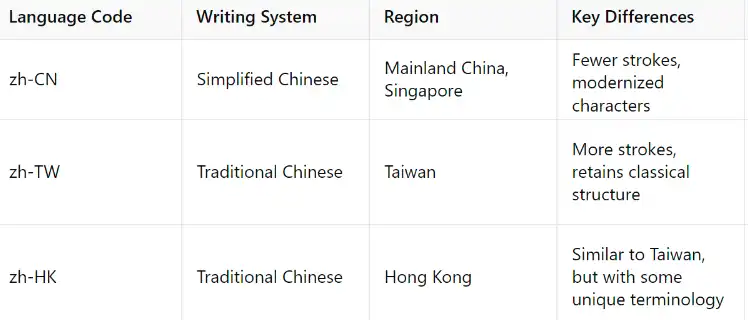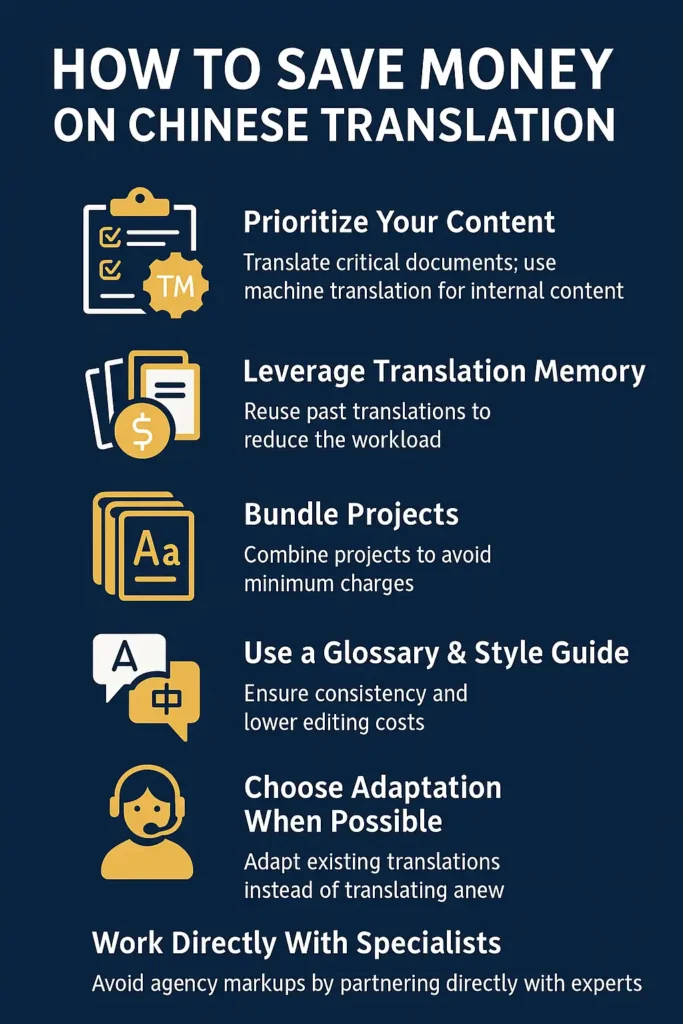Learn smart ways to reduce costs without sacrificing quality in English to Simplified or Traditional Chinese Translation—perfect for growing businesses.
READ MORE >> 2 Important Things to Consider When We Translate English to Chinese Traditional
- 1. Are Simplified and Traditional Chinese Mutually Intelligible?
- 2. When to Use Simplified vs. Traditional Chinese?
- 3. Can I Translate English to Cantonese?
- 4. Can I Translate English into Mandarin?
- 5. Translation Budgeting Tips
- 6. Traditional & Simplified: Translation + Adaptation
Are Simplified and Traditional Chinese Mutually Intelligible in Chinese Translation projects?
In most cases, Chinese readers can understand both scripts, though they may have preferences. If you’d like to learn the historical and linguistic background, check out this overview of Simplified and Traditional Chinese characters.
- Mainland Chinese visitors can often recognize Traditional Chinese characters on road signs, menus, and magazines when visiting Hong Kong.
- Taiwanese and Hong Kong readers can usually browse forums in Simplified Chinese without major issues.
However, each written form is region-specific, and selecting the correct one ensures a better user experience.
When to Use Simplified vs. Traditional Chinese?
✅ Use Traditional Chinese for audiences in Hong Kong, Macau, and Taiwan.
✅ Use Simplified Chinese for audiences in Mainland China and Singapore.
💡 Important Note:
Hong Kong and Taiwan use slightly different versions of Traditional Chinese. If your audience includes both, consider localizing separately for Hong Kong Traditional Chinese and Taiwan Traditional Chinese for the most accurate communication.
By choosing the right script for your target audience, you ensure clarity, engagement, and effective communication across all platforms.
When to use Simplified Chinese and Traditional Chinese?
Always consider your target audience and their geographical location when selecting between Simplified and Traditional Chinese for your content.
Use Traditional Chinese for audiences in Hong Kong, Macau, and Taiwan.
Use Simplified Chinese for audiences in Mainland China and Singapore.
Keep in mind that Traditional Chinese in Hong Kong and Taiwan differs slightly in terms of word choice, terminology, and writing style. If your content is targeting both regions, refining your translation to suit each variant ensures better engagement and clarity.
More budget, more options
If you got deep pockets, you should treat locales as a unique language when ordering, for instance:

Only native translators in that country or region should translate each language locale. That’s three times (3X) budget of a single language locale.
Many companies will do this because they want to make sure they won’t offend the target audience. Some expressions are sensitive or inappropriate to use in some regions.Companies entering China often underestimate the importance of regional differences in Chinese Translation.
Limited budget, more concerns
If you’re working with a limited budget for Chinese translation, you may encounter a common scenario:
Some translation agencies claim they can provide both Simplified and Traditional Chinese, but instead of properly localizing the content, they rely on a built-in Windows feature called “character conversion between Simplified and Traditional Chinese.”
Why This is a Problem:
Automated conversion only changes characters but does not adapt terms, expressions, or sentence structures.
Certain words differ completely between Mainland China, Taiwan, and Hong Kong, making direct conversion ineffective.
Your audience will notice the difference—poorly adapted content can feel unnatural and unprofessional.
Hidden Costs of Automated Conversion:
Some agencies won’t charge extra for this because the tool is free, while others may charge you unnecessarily.
The final output won’t meet native speaker expectations, leading to revisions, misunderstandings, or even reputational damage.
The Best Approach:
The most effective way to handle Simplified and Traditional Chinese translation is to work with native translators who understand the regional differences in vocabulary, grammar, and cultural nuances.
And then, there’s a third option—a more convenient and optimal approach that balances cost-efficiency and accuracy. Let’s explore it.
Traditional & Simplified: Translation + adaptation
Adaption means there’s an editor who perfectly understands both language locales. He or she will render the content to his or her own native language. He or she will pay particular attention to wordings and nuances that might sound weird to native speakers of his or her language.
This requires trained and dedicated editing skills. They are rare gems translators who have long working experience in both Hong Kong/Taiwan and mainland China.
This is our solution to our customers who wish to cover all Chinese speaking audiences. If you’re looking for quality and natural style in writing without spending 3X budget, this is for you.

With the right Chinese Translation strategy, you can save more cost and allot the remaining budget for other tasks. How can you get both translations at lower costs?
You will get half the price of translation service for adaptation if you work with the AZ-Loc team.
Join 200+ customers who are happy with our solution of getting both simplified and traditional Chinese translations without paying too much. You can save more cost and allot the remaining budget for other tasks. Contact us today to start saving on your Chinese translation projects while ensuring quality and consistency.
